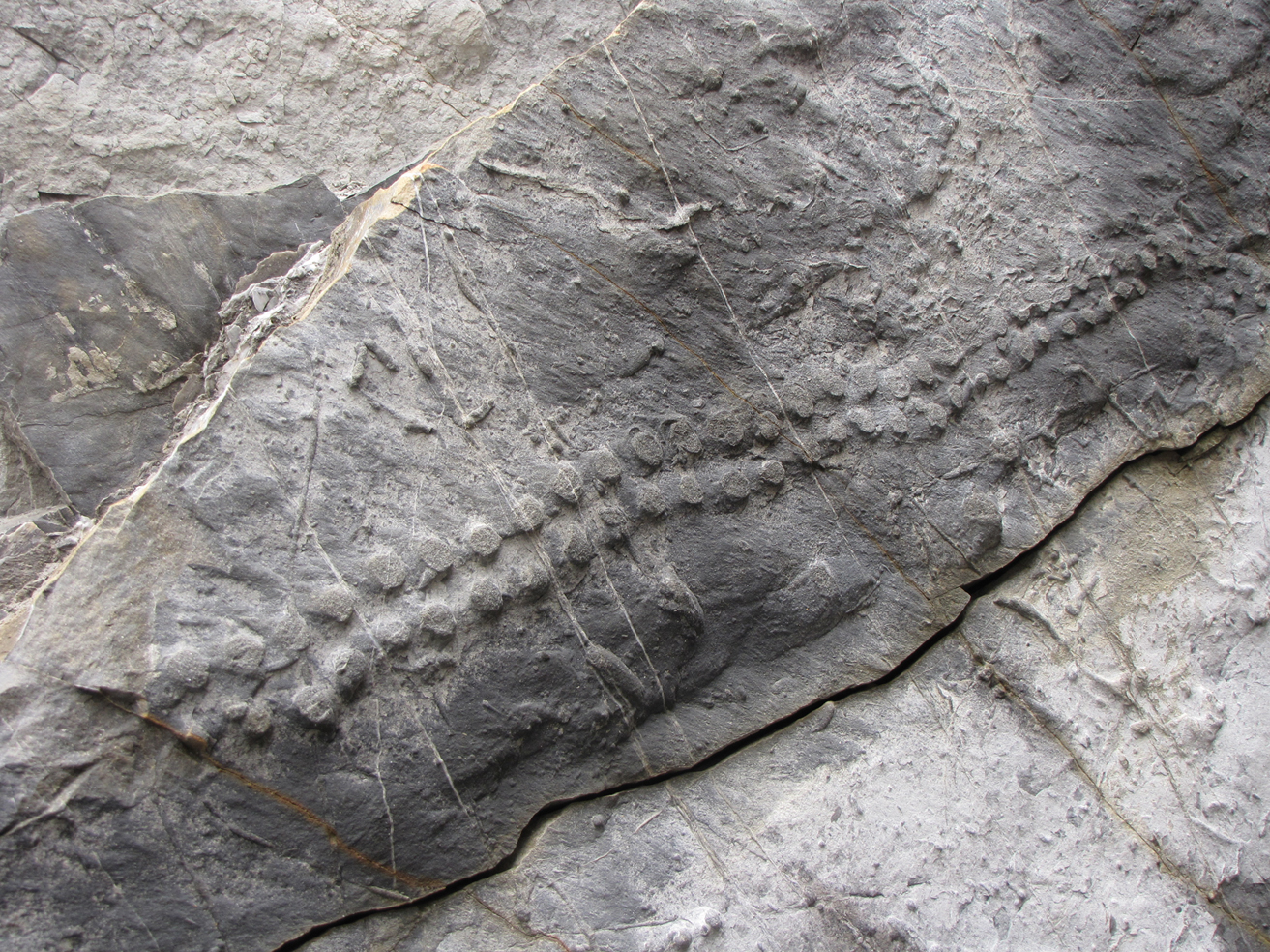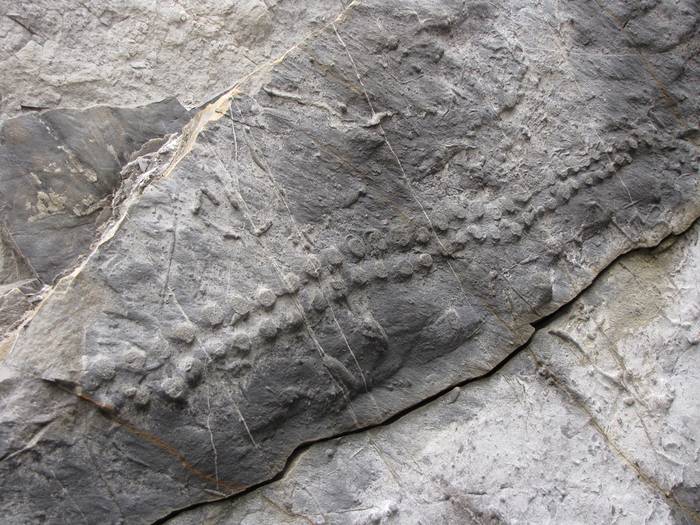The fossil footprint of an unknown organism rescued in Zumaia
2011/11/16 Galarraga Aiestaran, Ana - Elhuyar Zientzia

Seven years ago, two geologists found a mysterious imprint in the ravine of the biotope Deba-Zumaia. The director of the biotope, Asier Hilario, and the Superior Council of Scientific Research (CSIC), Juan Carlos Gutiérrez Marco, were the geologists who soon realized their importance. Now, considering that the fossil was in danger of extinction, it has been removed from the place (see photo gallery of the rescue) and taken to Algorri to the interpretation center (Zumaia). The fossil presentation will take place today at 7 pm.
Asier Hilario stressed that “fossil has a great scientific interest, especially for its size. Fossils of this type that have been found to date have a length of between 30 and 40 centimeters, which means 1.53 meters. That makes it special, great.”
It is the fossilized footprint (ichnofossil) of an organism that lived in the Eocene 49 million years ago. Scientists do not know this organism, but have found more clues of this type, corresponding to a period of 411 million years (from the ordovician period of Paleozoic to Neogen). However, there are not many copies and it has been called in various ways. However, the scientific name of the fossil is Saerichnites abruptus.
Today, thanks to the batisfatos, it has been possible to photograph similar remains on the seabed. They have been called Saerichnites canadensis and the oldest are those of Cambodia, but in this case they do not know what is the organism that generates the footprint.
The specimen found in the biotope is in very good condition and is ideal to appreciate the characteristics of this type of fossils. It is 1.53 meters long by 3 cm wide and has two rows of pits in parallel, while the pits have a diameter of 0.7 to 1.7 cm.
Since its discovery, geologists have followed the ichnofossil, as they considered it could be in danger. In fact, he was at the base of an unstable ravine and endured the force of the waves. Finally, seeing that it was cracked, they decided to extract it before a disaster occurred. In this sense, Asier Hilario stressed that this is an “example of the conservation that is done in the biotope” and even considered it as a “model”.
The rescue has not been easy, since the rock section surrounding the fossil has a weight of more than 200 kg. Thus, eight people, under the direction of the Department of Rural Development of the Provincial Council of Gipuzkoa, worked for their extraction. Now Algorri has had to extract more than 200 kg of rock to rescue the ichnofossil. Ed. : Asier Hilariowill be presented at the interpretation center, where it will be available to all those who want to see it and analyze it.

Gai honi buruzko eduki gehiago
Elhuyarrek garatutako teknologia






